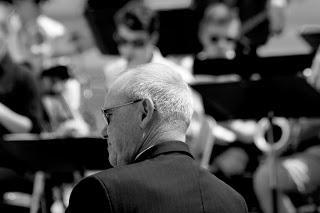Armed Forces Day 20 May 2017

Regional Veterans' Memorial, Columbia Park, Kennewick, WA
“We will pay any price, bear any burden, support any friend, and oppose any foe to ensure the success of liberty.” These words of President Kennedy from his inaugural address might raise the question of just what, exactly, is the price of liberty?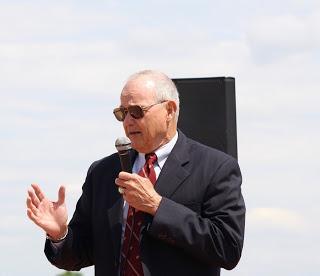
I think it could be argued that the most important event of the 20th Century was the First World War. It was most important because of the impact the War had on Europe and the rest of the World. It is fitting, therefore, that we look back one hundred years and try to understand this war and how it continues to impact the world today.
The First World War, or the Great War, as it was called before it was surpassed by the Second, has captured my fascination. As a professional soldier, I have tried to understand how men could keep on under the appalling conditions they found themselves in on the Western Front.
Today, I’d like to share with you some of the things I’ve done and seen in the past several years, as I tried to understand what some historians consider the real beginning of the 20th century.
The first question we might think about is “Why did the war happen?” Was it the system of alliances? The growth of military capability? The fact Europe had almost a century of mostly peace? What was it that caused this war?
Several years ago, when I was a student at the Naval War College in Newport, RI, my history professor said that the Great War happened because “No great power said it wouldn’t!” Not the Austrians, or the Russians, or the Germans, or the French, or the British.
I’ve seen the car in which Archduke Ferdinand and his wife Sophie were riding when they were assassinated in Sarajevo--it’s in the Military Museum in Vienna. Once I went to Artstetten, their palace an hour and a half west of Vienna. There I was taken on a private tour of the museum, which is what it is now and was shown the crypts where the Archduke, and his wife laid to rest. My escort was the great-grandson of Archduke Ferdinand.
I went to Bad Ischl and toured the hunting lodge of Austrian Emperor Franz Joseph – it was he who declared war on Serbia. I’ve stood behind the desk on which he kicked off the chain of events that ultimately cost 60 million lives–when you consider the 50 million killed in WWII.
As important as these were, though, no understanding of the Great War is complete without seeing the battlefields. As many of you surely know, after a few initial months, the Western Front was stabilized along a 400-mile front from the North Sea to Switzerland. The trenches were, in some cases, only 50 meters apart and almost never more than a few hundred. In between was a term coined from that war: “no man’s land.”
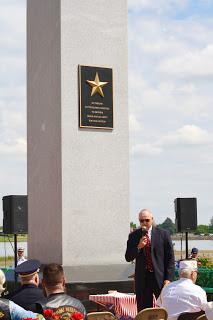
It is possible to walk the trench lines from the Belgium Coast to Switzerland, because in many places the trenches are still there. If they aren’t, you can just follow the cemeteries; over 160 in one battlefield alone.
By 1916, the War had become a war of attrition, and the Germans decided to attack on the salient around Verdun, in NW France. The strategy was to attack a place the French would have to defend and to “bleed them white.” Nowhere on the Western Front does the magnitude of the war hit home like it does at Verdun. I’ve been there three times–in 1983, 2001, and again in 2014. OK, I admit—I’m a little strange!
The trenches are there; so are the forts. During the battle not a tree was left standing; afterwards, the government planted trees, but no one can go for a picnic in these forests. Actually, signs prohibit you from leaving the roads –the woods are simply filled with unexploded ordnance.
The battle for Verdun raged from February to November 1916, and it almost destroyed the French Army. Virtually every French regiment fought there, and when the war was over, the French build the largest war memorial I’ve ever seen to house the bones of those killed on the surrounding hills.
15,000 are buried in front of the Ossuary (literally a place for burying bones), each with a cross that says, “Mort por la France” – died for France.
After the war, all the bones were dug up from the shallow graves around Verdun – both French and German – and buried in the basement of the Ossuary. If you get on your hands and knees, you can look into the windows and see the bones.
How many do you think are there? Remember, these are all unknown. Would 10,000 sound like a lot? 30,000? How about 50,000 (about what we lost in a dozen years in Vietnam)? Would you believe 130,000 unknown? That was the price of liberty at Verdun.
A few years ago, I had the chance to visit the Somme River valley. The very word has a special meaning to the British. To relieve pressure on Verdun, the high command decided a joint British-French offensive would be launched on the first of July 1916. The French didn’t have many divisions to contribute (only 3), so the British put in 17. To an impartial observer, there could scarcely have been a poorer place chosen for the British to attack. The Germans had been dug in for almost two years, constructing deep bunkers and communications lines.
Nevertheless, on the first of July, 1916, the forces of the British Empire went “over the top.” There had seldom been a slaughter in the history of warfare to compare with the losses the British suffered. Of 100,000 men who attacked, roughly 20,000 were killed on that single day –with another 40,000 wounded ---60% casualties.
You can visit the Canadian Newfoundland Memorial at the Somme. It is superbly kept. The trenches are there; between them are the shell holes. Sheep keep the grass down, so you can see what the ground looked like. Three hundred yards away are the German trenches; they’re maintained. as well. I walked where the Canadians launched their attack, then I moved to the other side, a couple hundred yards away, to see what the Germans saw.
The question that I could not answer was, “How could troops continue to attack in the face of such resistance?” One company attacked kicking a soccer ball. They announced in advance:
The Great European Cup
The Final East Surreys v. Bavarians
Kickoff at Zero.
The First Newfoundland Regiment ceased to exist. That was the price of liberty the Canadians paid.
The British erected two great monuments to the War in the 1920s. One is called, “The Missing of the Somme.” Imagine a four-sided horseshoe magnet rising from the battlefield, inscribed with the names of those killed there who, in Kipling’s words, “Lie in no known graves.” How many names do you think are on that monument? Remember, this is just one battle –July-November 1916. Would you believe 73,400? And this is just British and South African troops, the Canadians and ANZACS had their own monuments.
I was struck by the poppies at the monument, when I was there. School children and great grandchildren come to pay their respects. In the British Military Museum in London, I came across a letter from a British trooper. He said, “If you get this letter, you’ll know I died doing my duty.” Such was the price of liberty for this family.
Vera Brittain wrote a book about her losses – her brother, her fiancé, and two close friends – it became a best seller. So was Robert Graves’ “Goodbye to All That.”
And so, 1916 came to an end –basically where it started. One of the heroes of Verdun was put in command of a French Army in the middle of the line. He decided to attack in April of 1917, and the French Army was slaughtered – the Germans again had the high ground. I toured their underground fortifications. The French Army mutinied – not mentioned much anymore. 23,000 were convicted of mutiny after Chamin de Dames; 432 condemned to death; 50 executed. The French never attacked again. They waited for the Americans.
As bad as the Somme was, it was worse at Passchendale in 1917. The British held the Belgium town of Ypres throughout the war. Three battles were fought there, with the greatest in 1917. Never in the history of warfare has a battle been fought under more appalling conditions. The entire battlefield was a swamp. If a soldier stepped off the duckboards, he’d probably drown, being weighed down with all his equipment.
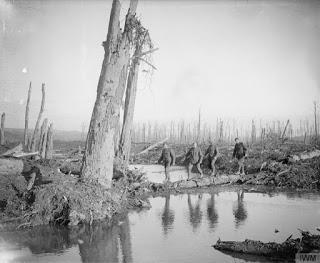
In Flanders Fields, the poppies blow,
Beneath the crosses, row on row;
And in the sky, the larks bravely singing fly,
Scarcely heard amid the guns below.
I was in Ypres in 2001, on Armistice Day. Thousands of Brits were there to pay their respects. At the Menin Gate—the other great British monument—are listed 55,000 names of Commonwealth soldiers who lie in unknown graves. 35,000 additional unknown are listed at Tyne Cot Cemetery—the largest British cemetery in Europe,
Every night at 2000 hours, the Ypres fire brigade plays “The Last Post,” sort of the British “Taps.” They started playing in the 1920s, when the Menin Gate monument was dedicated, and if they play “The Last Post” once an evening for a soldier killed in the Ypres Salient, they’ll play until the 25th century. Such is the price of liberty.
At the Somme and at Ypres, the battlefields keep on killing people. Every spring, unexploded ordnance is plowed up. The farmers stack it beside the road, and explosive ordnance disposal units collect and dispose of it. Every eight years or so, on average, some farmer on a tractor is killed by an explosion.
The bodies keep coming up, too. When I was there, I saw a dozen new graves—bones that had been recently discovered when a contractor was excavating to build a new road. Apparently, the war never ends in France.
I’ve been to Belleau Wood, where the Marines fought so hard the French Government declared that forevermore the woods would be known as the Bois de le Marine. I drank from the bulldog fountain, where Marines filled their canteens. It looks just like it did in 1918. The trenches are still there, but don’t leave the path!
I went to Compeign, where the Armistice was signed in a railcar-and where Adolf Hitler (who fought at Ypres) made the French surrender in 1940.
So, from the beginning in Sarajevo to the end in Compeign, the Great War consumed its youth. Two million Germans, 1.7 million French, a million British. 35% of those baby boys born from 1882 to 1885.
In every cathedral of France of any significance, there is a simple plaque:
“To the Glory of God and in memory of one million men of the British Empire who died in the Great War, and of whom the greater number rest in France.”
That was the price of liberty.
So, what was the long-term impact of the Great War? Politically, it destroyed the Austrian-Hungarian Empire and the Turkish Ottoman Empire. It led directly to the establishment of the Soviet Union. It also led to the rise of Hitler’s Germany and the Second World War. It destroyed empires and led to the creation of the League of Nations and new countries throughout the world. And it led to the United States becoming a world power for the first time. The modern Middle East looks like it does today because of the War.
Socially, the war led to the emancipation of women and largely to their entrance into the work force. It also led to a sense of loss of innocence—no longer would people think that civilization was on a steady path to improvement. In some places—think Britain—it led to pacifism.
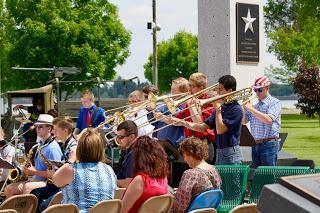
Thank you very much.
